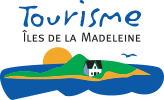

As anyone who lives by the sea will tell you, coastal life is both fortunate and fraught. As long as humans have been coming to the Magdalen Islands archipelago, the sea has been a source of sustenance: initially, the Mi'kmaq came to the islands seasonally to hunt walrus, and the earliest settlers who came from England, Scotland, Ireland, the Channel Islands, and France lived largely off bountiful fish. The sea also provides transport, and many ancestors of today's Magdalen Islanders sought refuge on the islands from famine or instability elsewhere. Yet the waves, storms, and shoals can also be dangerous. Over a thousand vessels have wrecked in the sandy banks and shallow waters of the archipelago. In the eighteenth and nineteenth centuries especially, heavier navigation, combined with strong currents and the absence of lighthouses, meant many vessels were lost in the area, each with its own legends and lore, which have become part of the Islands' history over the years. The former Anglican church of St.-Peters-by-the-Sea, in the village of Old Harry, was built with wood salvaged from shipwrecks. Given the building's origins, it is fitting that today the deconsecrated church is home to a permanent exhibit that tells the stories of many of the Magdalen Islanders who have perished by the waters, including in shipwrecks. The moving “A People of the Sea” exhibit features photographs, interpretative panels, and artifacts that bear witness to losses that have touched every family on the Islands at one time or another. “A Wreck at Old Harry” exhibit To live on an island is to live with the ocean—its bounty, its beauty, and its storms. The shores and shoals of the Magdalen Islands have seen hundreds of shipwrecks over the years, most in the eighteenth and nineteenth centuries, before the advent of modern navigation. This interactive exhibit recounts the voyage of one of these ships, the Miracle, through the eyes of a fictional character.
866, road Principal
Grosse-Île, G4T 6B7
(Quebec, Canada)
Phone : 418 985-2116